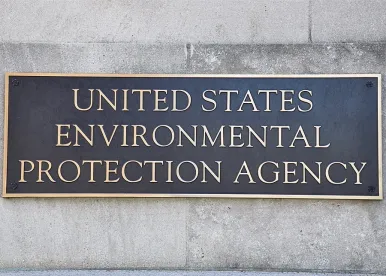Last week, the U.S. Environmental Protection Agency (EPA) completed its reconsideration of a January 2009 final action on “project aggregation.” Project aggregation is the concept that addresses when to combine nominally separate physical or operational changes at a stationary source to determine whether the changes trigger New Source Review (NSR) permitting requirements under the Clean Air Act (CAA). The 2009 final action (74 FR 2376) (the “2009 Aggregation Action”) sets forth the EPA’s desired interpretation and policy concerning when to aggregate such activities into a single project. The EPA has submitted the final action reconsidering the 2009 Aggregation Action for publication in the Federal Register (the “2018 Reconsideration”). After the 2018 Reconsideration is published, the 2009 Aggregation Action will go into effect
Under the CAA, an existing stationary source triggers NSR permitting requirements when it undergoes a “major modification” – a physical or operational change or project that results in both (1) a significant emissions increase from the project (known as “Step 1”), and (2) a significant net emissions from the source (known as (“Step 2”). How a project is defined under Step 1 determines what emission increases are considered in determining whether a significant emission increase from the project has occurred. It also determines what collection of activities are evaluated to determine whether exclusions apply, such as the exclusion of routine maintenance, repair and replacement activities.
Determining what constitutes a project has always been a case-by-case, fact-specific decision. That remains true under the 2009 Aggregation Action. In the 2018 Reconsideration, the EPA noted that such decisions were historically guided by prior EPA letters and guidance documents. The 2009 Aggregation Action establishes so-called “criteria” to consider in a case-specific evaluation to determine whether nominally separate activities are “substantially related” technically and/or economically and, thus, should be aggregated. These criteria are not necessarily determinative that the activities should be aggregated. But, the EPA notes the criteria are “indicators” that such nominally separate activities are candidates for aggregation.
Criteria favoring aggregation:
-
Activities that “are likely to be jointly planned (i.e., part of the same capital improvement project or engineering study), and occur close in time and at components that are functionally interconnected”;
-
Activities whose “benefit is significantly reduced without the other activity”; and
-
Activities that are part of a phased capital improvement project and, thus, have a substantial economic relationship.
Indicia and considerations that factor against aggregating nominally separate activities:
-
Activities are related only because they support the source’s “overall basic purpose”;
-
Activities that occur simultaneously are not presumed to be substantially related;
-
The farther apart projects are timed, the less likely they are to be substantially related because they may occur outside of planning and capital-funding cycles;
-
Activities that occur in unrelated portions of a major stationary source; and
-
Rebuttable presumption that activities that occur more than 3 years apart are not substantially related.
While the 2018 Reconsideration lifts the administrative stay that the EPA had placed on the 2009 Aggregation Action, the 2009 action had also been appealed to the D.C. Circuit by the National Resources Defense Council, and that appeal was stayed while the EPA reconsidered the 2009 action. The original stay directed the parties to file motions regarding future proceedings in the appeal within 30 days after the EPA completed its reconsideration, so the appeal may resume next month.
The EPA also announced that it intends to further consider the impact of the 2009 Aggregation Action in a future rulemaking. Specifically, the EPA issued a March 13, 2018 EPA memorandum on “Project Emissions Accounting Under the New Source Review Preconstruction Permitting Program,” which addresses how emissions increases – considering both emission increases and decreases – are determined in Step 1. The 2018 Reconsideration explains that the EPA intends to issue a rule to clarify the interpretation in that memorandum through a change to the regulations. In that rulemaking, the EPA intends to seek public comments on the potential interaction between its interpretation and policy regarding “project aggregation” and its approach to Step 1 emission analyses.




 />i
/>i
